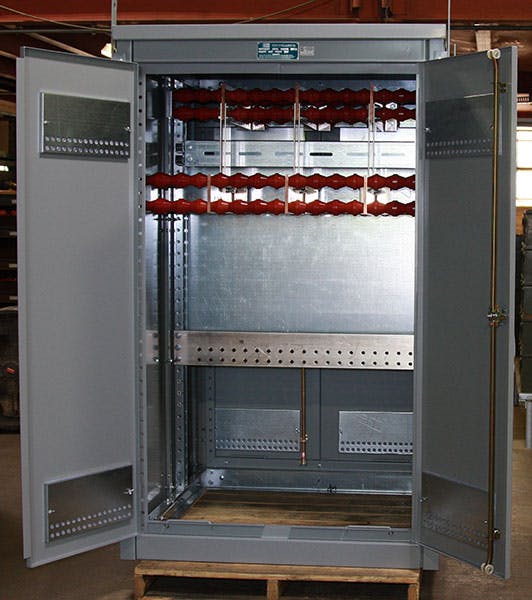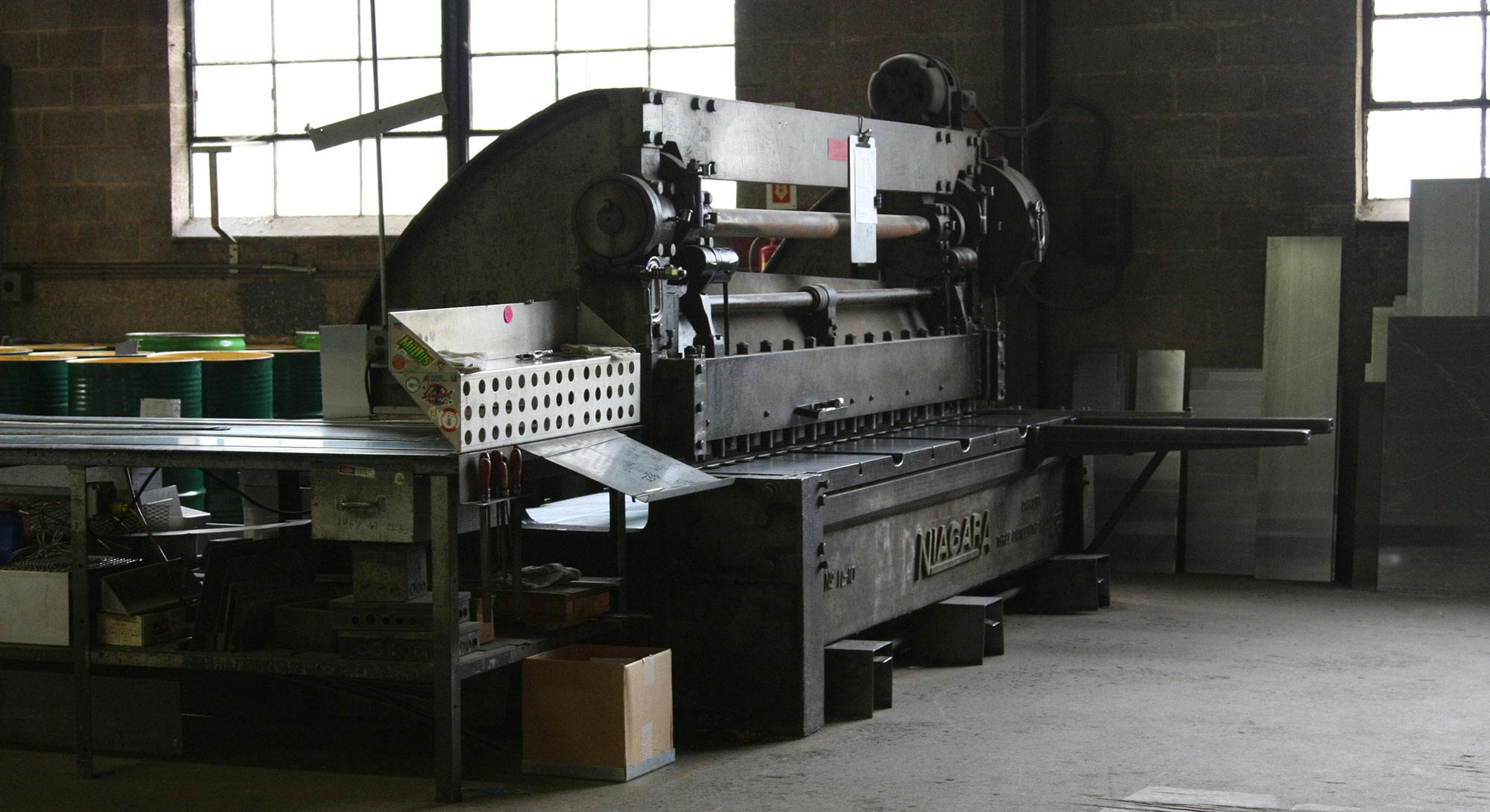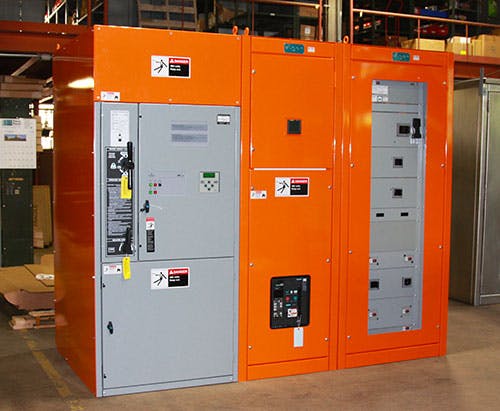Custom sheet metal is one of our specialties here at Penn Panel and Box Company. It can be used for a variety of applications, including but not limited to: switchgear enclosures, control cabinets, panel trims, and pull boxes. All of your electrical components are likely to be housed within a sheet metal box, and if the locations in which they are installed have any unique characteristics, you’ll probably require a custom solution.
Sheet Metal Enclosure Customization Options

Each box has four main components which can be customized. These are the sheet metal thickness, material, size, and interior layout. For thickness, we use anywhere between 16 gauge and 3/16” depending on the strength requirements and any applicable UL or NEC requirements.
The materials used largely have to do with cost and the environment the box is going to be in. Carbon steel is the most basic material used for boxes. It comes at a relatively low cost and is very strong. If rust and corrosion is more of a concern, then galvanized and stainless steel are better options, although they carry increased costs. Finally, aluminum is yet another option which is a good choice when there are concerns about weight or magnetics.
Size and interior layout can be the most variable parts of a custom electrical box. Depending on how much room there is in the final location, a box might have to be much more compact than usual. And if this is the case, the interior layout will need to be adjusted to reflect this. Other times, a larger than usual box may need to be designed if it needs to house more components inside.
How Sheet Metal Enclosures are Made

Once we understand what kind of box we need to make (switchgear enclosure, control cabinet, panel trim, or pull box), the environment it’s going to be operating in, and any customer-specific constraints, we can get to work. Our fabrication process has four basic steps: designing, machining, welding, and coating.
Step 1: AutoCAD
First comes the design phase where we mock up your custom electrical box in 3D using the AutoCAD software. Digital constructions such as these save you money by allowing us to test out different options before we machine or weld a single piece of sheet metal. And once we’ve settled on a design which will meet all of your specifications, it’s time to move on to step 2.
Step 2: CNC Machining and Forming
The AutoCAD file generated during step 1 is then loaded into our CNC punching machine. The CNC cuts out the various pieces and creates louvers which will eventually be used to prevent the internal components from overheating. We then use a press brake to form edges and flanges.
Step 3: Welding
Step 3 is the construction phase where the enclosure is assembled in full. The various pieces are welded together to create a sturdy frame which will hold up against any and all operating conditions.
Step 4: Powder Coating

The final step involves applying a polyester powder coat finish. Aside from making your metal box look more presentable, it helps protect against corrosion and wear. This powder coating will preserve the quality and condition of your metal box for years to come. As for colors, we have a variety of industry colors to choose from. And for those who want something a bit more unique, or on brand, we offer custom colors as well.
Do I Need a Custom Electrical Enclosure?
There are many reasons for why a custom box may be needed. One of the most common is that there are size restrictions which need to be confined to. In some cases the final location of the box doesn’t have much space. But in others, it’s not the final location which is the issue, but rather getting to that location. The box may need to fit through tight doorways or around claustrophobic stairwell corners.
Sometimes the material and thickness of metal being used is the driving factor in the construction of a custom box. Sometimes mobile boxes are required, in which case a lighter material and thinner sheet will be preferred. Heat can be another issue, specifically for internal components that produce heat, like high ampacity busbar. And even risk of corrosion and rust can be a factor if the box will be exposed to the elements or near salt water.
Finally, the internal structure of the enclosure may be why a custom solution is needed. For various reasons, your box may require extra ventilation or components specific to your application. Whether the exterior needs to be larger to house more components, or the interior layout needs to be further compartmentalized, a custom electrical box will need to be built.
Conclusion
Some sheet metal enclosures must be custom built to fit in a limited space, withstand potentially damaging environmental conditions, or house a custom interior layout. And based on the specifications your box needs to be held to, there are a variety of sheet metals and thicknesses to choose from. Once we know how and where your box is going to be used, and we have the materials sorted, we begin the fabrication process. Your metal enclosure is first designed in AutoCAD, the pieces are then punched out by the CNC machine, our technicians weld together your box, and finally the powder coat finish is applied.
Penn Panel and Box Company Custom Metal Enclosure Fabrication
At Penn Panel and Box Company, custom sheet metal enclosure fabrication is one of our specialties. Thanks to decades of manufacturing custom electrical solutions such as switchgear and panelboards, we have extensive experience with metal enclosures. Contact us today for more information on how we can build the perfect sheet metal enclosure for your project.
